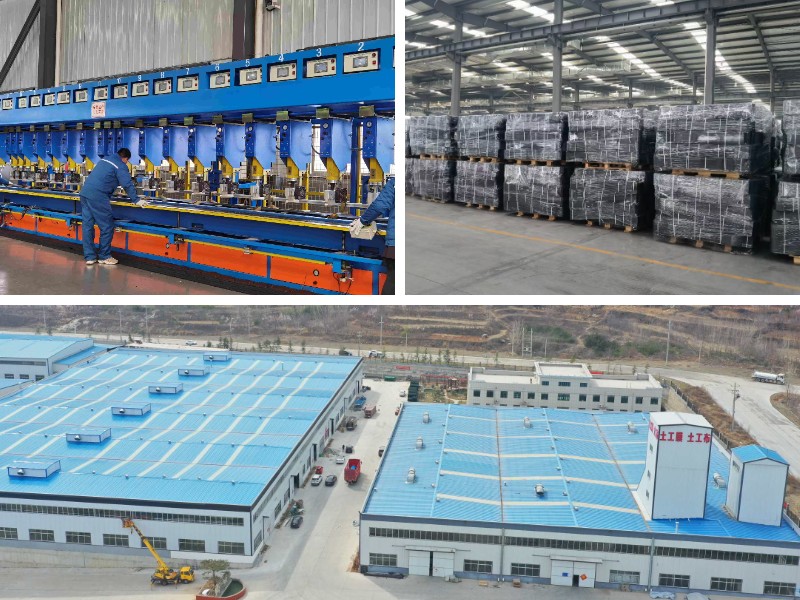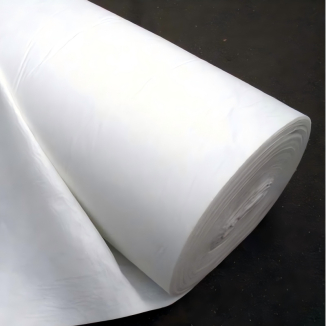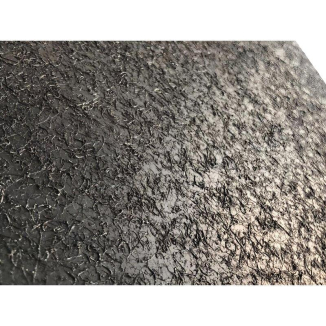How Geocell Technology Works: Engineering Principles Explained
In the world of civil engineering and infrastructure development, stability, durability, and cost-effectiveness are non-negotiable. Whether developing roads, defending walls, or erosion manipulate systems, engineers constantly are attempting to locate choices that give a boost to soil, end displacement, and extend the lifespan of projects. Enter geocell technology—a revolutionary geosynthetic reply that has modified how we address soil-related challenges. This article breaks down the engineering thoughts in the returned of geocell technology, explores its core factors like geocell HDPE, and highlights the one-of-a-kind benefits of specialised versions such as perforated geocell. By the end, you’ll apprehend why geocell constructions have stop up a go-to desire for present day engineering projects.
1. What Is Geocell Technology, and Why Does It Matter?
At its core, a geocell is a three-dimensional, honeycomb-like form made from high-strength polymers. When accelerated and filled with soil, aggregate, or distinct infill materials, it creates a rigid, interlocked machine that restricts soil action and distributes heaps evenly. Unlike everyday soil reinforcement methods (such as gravel layers or concrete slabs), geocell technological information leverages the “confinement principle”—trapping infill components internal its cells to beautify their shear strength and give up lateral displacement.
This science matters due to the truth it solves conventional engineering affliction points: it reduces the prefer for expensive, resource-heavy materials, minimizes constructing time, and improves long-term stability in hard environments (e.g., easy soils, steep slopes, or flood-prone areas). For example, in avenue construction, geocell layers can decrease the thickness of the asphalt or base course thru up to 30%, lowering fees while boosting durability. And with variations like geocell HDPE (high-density polyethylene) and perforated geocell, the science is adaptable to nearly any project requirement.
2. Core Materials: The Role of Geocell HDPE in Performance
The effectiveness of a geocell system starts with its material—and geocell HDPE is the gold elegant for most applications. High-density polyethylene is a thermoplastic polymer acknowledged for its exceptional strength, chemical resistance, and UV stability, making it best for outdoor, long-term use. Here’s why geocell HDPE stands out:
High Tensile Strength: HDPE can stand up to good sized pulling forces without tearing, making certain the geocell structure stays intact even beneath heavy loads (e.g., truck traffic on highways or stress from maintaining wall backfill).
Weather Resistance: Unlike extraordinary polymers, HDPE resists degradation from sunlight, rain, and extreme temperatures, extending the geocell’s lifespan to 20+ years.
Chemical Inertness: HDPE does no longer react with soil acids, alkalis, or contaminants, making it blanketed for use in industrial sites, landfills, or agricultural projects.
During manufacturing, geocell HDPE is extruded into thin, flat sheets, which are then welded or punched to create the honeycomb pattern. When multiplied on-site, the cells (typically 10–30 cm in height) form a grid that locks infill materials in place. This plan ensures that the infill—whether gravel, sand, or recycled materials—cannot shift horizontally, drastically improving soil stability. Without the electrical energy of geocell HDPE, the computing device would fail to face up to environmental stressors or heavy loads, rendering it ineffective.
3. Engineering Principles: How Geocell Systems Reinforce Soil
To apprehend how geocell science works, we prefer to dive into three key engineering principles: confinement, load distribution, and lateral restraint. Together, these requirements flip prone soil into a strong, impenetrable base.
Confinement: Trapping Infill to Boost Shear Strength
Soil’s natural susceptible factor lies in its tendency to shift when under load—this is recognised as “shear failure.” Geocells address this by using capability of confining infill supplies interior their closed cells. When infill is added, the geocell’s partitions examine a passive stress that restricts the infill from spreading outward. This confinement will expand the infill’s shear strength (the plausible to stand up to sliding) thru up to 50%, relying on the cell pinnacle and infill type. For example, a geocell stuffed with crushed stone will have a lengthy way large steadiness than free stone alone, as the cells end the stone from settling or transferring over time.
Load Distribution: Spreading Weight to Reduce Pressure
Another quintessential principle is load distribution. When a heavy load (like a vehicle) is utilized to the ground, it concentrates stress on a small location of soil. Without reinforcement, this stress can cause the soil to compress or sink. Geocells unfold the load evenly during a giant flooring vicinity by means of potential of transferring the weight from the pinnacle of the machine to the geocell’s partitions and the underlying soil. This reduces the stress on the subsoil, stopping contract and extending the existence of the structure above. Lateral Restraint: Preventing Soil Erosion and Slope Failure
On slopes or embankments, lateral soil action (erosion or sliding) is a essential risk. Geocells grant lateral restraint via performing as a bodily barrier that holds soil in place. When set up on a slope, the geocell grid anchors the topsoil and infill, stopping rainwater or wind from washing away material. For even greater basic overall performance in moist conditions, engineers oftentimes use perforated geocell—a variant with small holes in the cell partitions that allow water to drain even as conserving soil. This combination of restraint and drainage is why geocells are significantly used in erosion manipulate projects, from riverbanks to toll street embankments.
4. Perforated Geocell: Enhancing Drainage for Wet Environments
While stylish geocells excel in most dry to pretty moist conditions, perforated geocell is designed for initiatives the vicinity drainage is critical. As the title suggests, perforated geocell aspects small, strategically located holes in the HDPE phone walls. These holes serve two key purposes:
Water Drainage: In areas with heavy rainfall or immoderate groundwater levels, trapped water can weaken soil and purpose geocell buildings to fail. The perforations allow more water to get away from the cells, stopping hydrostatic pressure buildup and lowering the hazard of erosion. This is particularly vital for roadways, the area standing water can lead to potholes or pavement cracking.
Soil Aeration: Perforations moreover promote air waft inner the geocell, which helps maintain soil structure and helps plant expand in inexperienced infrastructure initiatives (e.g., vegetated retaining partitions or slope stabilization with grass).
Like stylish geocell HDPE, perforated geocell retains all the strength and sturdiness of HDPE— the holes are sized to hold away from compromising the structure’s integrity. Engineers generally specify perforated geocell for initiatives in coastal areas, wetlands, or areas with immoderate annual rainfall, the region drainage is as necessary as soil reinforcement. For example, a perforated geocell gadget set up on a coastal dune can quit erosion from storm surges at the same time as enabling rainwater to drain, keeping the dune consistent and intact.
5. Installation and Maintenance: Ensuring Geocell Longevity
Even the incredible geocell desktop will underperform if set up incorrectly. Proper installation and maintenance are key to maximizing its lifespan and effectiveness. Here’s a step-by-step overview of the set up process, with a middle of interest on geocell HDPE and perforated geocell:
Step 1: Site Preparation
First, the internet site is cleared of debris, vegetation, and free soil. The subgrade (the natural soil under the geocell) is compacted to make positive a level, impervious base. For moist web sites the utilization of perforated geocell, engineers may additionally moreover add a geotextile layer (a permeable fabric) underneath the geocell to in a similar way beautify drainage and prevent extremely good soil particles from clogging the perforations.
Step 2: Geocell Deployment
The geocell (either accepted or perforated) is delivered to the internet site in flat, folded rolls to maintain space. Workers extend the rolls to their full size, forming the honeycomb grid. The geocell panels are then linked the use of clips or welding (for geocell HDPE) to create a continuous gadget that covers the project area.
Step 3: Infill Placement
Infill cloth (gravel, sand, or soil) is delivered to the geocell cells in layers. Each layer is compacted the utilization of heavy gear to make positive the infill is dense and tightly locked inner the cells. For perforated geocell, care is taken to maintain away from the use of infill with particles small adequate to clog the holes (e.g., extremely good clay).
Step 4: Maintenance
Geocell constructions require minimal maintenance, thanks to the sturdiness of geocell HDPE. Routine assessments incorporate inspecting for damage (e.g., tears in the HDPE walls) or infill loss, mainly after excessive local weather events. For perforated geocell, occasional cleaning of the holes may also moreover be wished to maintain drainage—though this is wonderful if the infill is particular selected.
When mounted correctly, a geocell gadget can ultimate decades, making it a low-maintenance, inside your capacity reply for long-term infrastructure projects.
6. Applications and Future Trends: Where Geocell Technology Is Growing
Geocell technology’s versatility has led to its adoption during a massive range of engineering projects. Here are some of the most typical applications, the region geocell, geocell HDPE, and perforated geocell play starring roles:
Road and Highway Construction: Geocells supply a increase to the base course, reducing asphalt thickness and stopping potholes. Geocell HDPE is preferred proper right here for its ability to face up to heavy traffic loads.
Retaining Walls: Geocells create gravity-based preserving partitions that are much less highly-priced and larger flexible than concrete walls. Perforated geocell is used in moist areas to drain greater water.
Erosion Control: Coastal dunes, riverbanks, and slopes use geocells to entice soil and prevent washing away. Perforated geocell aids in drainage, even as geocell HDPE resists saltwater corrosion.
Landfills and Containment: Geocells line landfill bases to prevent soil sickness and help heavy waste loads. Geocell HDPE’s chemical resistance makes it ideal for this.
Looking ahead, the future of geocell technological information is headquartered on sustainability. Engineers are exploring recycled supplies for geocell manufacturing (while maintaining HDPE’s strength) and integrating geocells with inexperienced infrastructure (e.g., vegetated geocell constructions for carbon sequestration). Additionally, advances in 3D modeling are supporting optimize geocell design—ensuring cells are sized and spaced flawlessly for each project’s special soil and load conditions.
Conclusion
Geocell science has redefined soil reinforcement in civil engineering, thanks to its reliance on verified principles like confinement, load distribution, and lateral restraint. At the coronary coronary heart of this technological understanding is geocell HDPE—a cloth that substances the strength, durability, and local weather resistance desired for long-term performance. For moist environments, perforated geocell offers imperative drainage, growing the technology’s features to even the most hard sites.
Whether you’re establishing a highway, stabilizing a slope, or controlling erosion, draw close how geocell science works is key to designing a challenge that is stable, cost-effective, and sustainable. As the employer continues to innovate, geocells will remain a cornerstone of modern engineering—proving that sometimes, the most first-class selections are these that work with, as a replacement than against, the natural homes of soil.
Contact Us
Company Name: Shandong Chuangwei New Materials Co., LTD
Contact Person :Jaden Sylvan
Contact Number :+86 19305485668
WhatsApp:+86 19305485668
Enterprise Email: cggeosynthetics@gmail.com
Enterprise Address: Entrepreneurship Park, Dayue District, Tai 'an City,
Shandong Province









